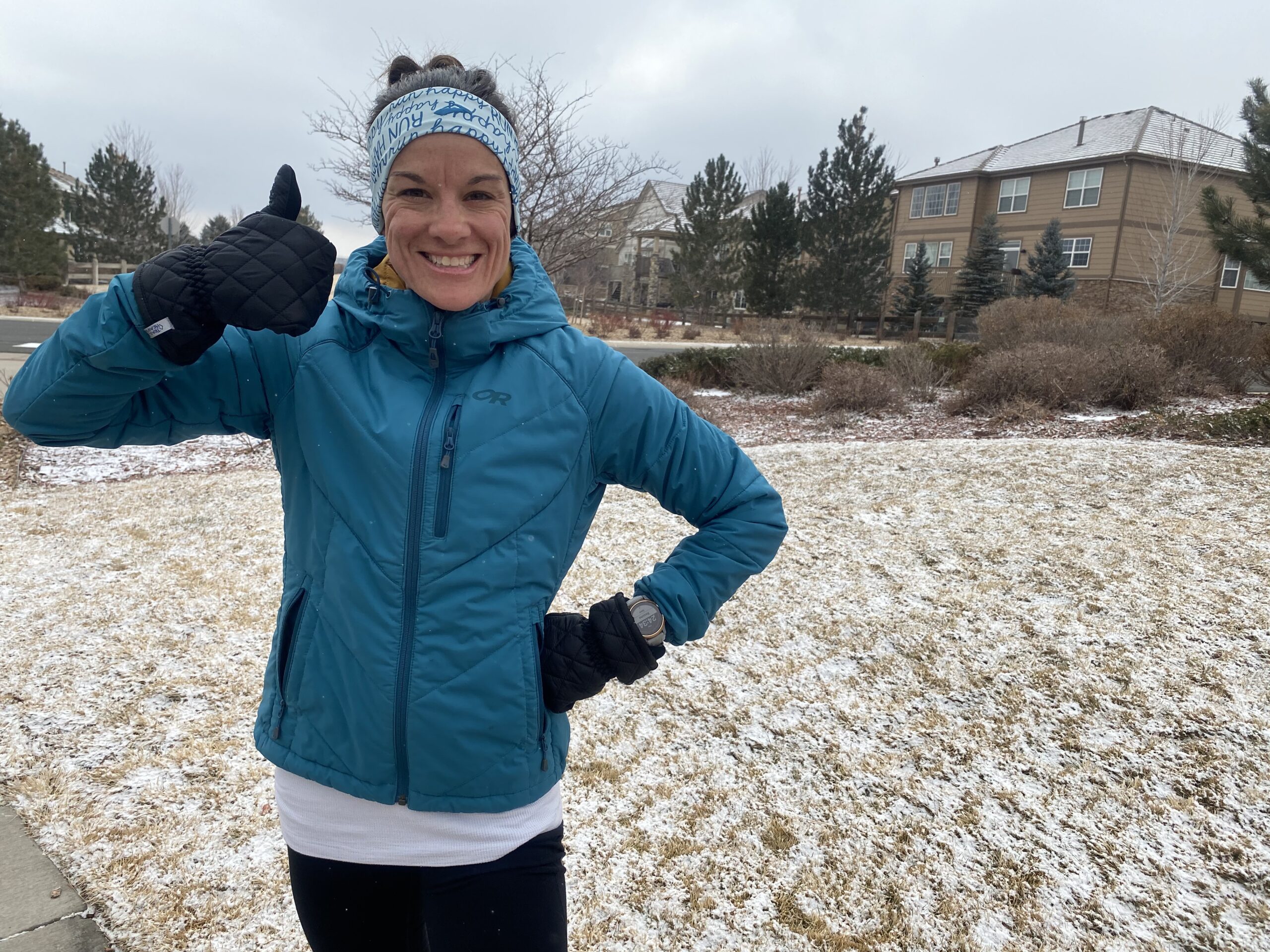When you’re training for an upcoming half marathon race, how do you know how fast to run on race day? Is there a way to predict how quickly you’ll be able to complete the race? Is there a pacing strategy you should utilize or should you just wing it on race morning and hope for the best?
The best way to pace your half marathon is to estimate your finish time and race pace, using a recent timed running effort. At the race, plan on starting out slower than your race pace for the first 3-4 miles to conserve energy for later. Over the course of the race, slowly build up speed until you’re going faster than your race pace as you cross the finish line.
Ready to learn more about half marathon pacing and strategy? Keep reading for more information!
What is “Half Marathon Pace”?
Half marathon pace is the pace you plan to run in the half marathon you’re training for, says famed running coach Hal Higdon.
But how do you know what that pace should be if you’ve never run a half marathon before? How do you know what you’re capable of at the outset of training?
Half marathon pace is something you can determine using a recent 10k or marathon finish time.
You can also determine your half marathon pace using a running calculator and your finish time from a wide range of distances.
Running expert and coach Greg McMillan says,
Part of the reason that half-marathon pace is such a weird pace for many runners is that it lies between two key thresholds: The anaerobic or lactate threshold and the aerobic threshold. The lactate threshold is roughly one-hour race pace (half-marathon pace for really speedy runners, but too fast for most) whereas the aerobic threshold is roughly two and a half hour race pace (half-marathon pace for some of us, but a bit slow for many—and marathon pace for a few up front)…That’s why having a good estimate of goal pace and then practicing it in training is an absolute requirement to be ready for your best performance on race day.
How do I determine my half marathon pace?
If you’re just starting out with running (i.e., you’ve started running in just the last 6 months or less), or are brand new to racing, we recommend that your goal for your half marathon be to simply finish your race and enjoy the race atmosphere around you.
For any other runners with prior running or racing experience, you can aim to complete your half marathon with a specific finish time, or a at goal race pace. But how do you figure out what your goal half marathon pace should be?
There are a few tried-and-true methods to fairly accurately estimate how long it might take you to run a half marathon.
Option 1: Use a Recent 10k Race
These methods require having a recent 10k average race pace or finishing time.
The general rule is to add 15-30 seconds to your 10k average pace per mile. For example, if you recently ran a 10k with an average pace of 9:00/mile, your estimated pace for a half marathon would be between 9:15/mile to 9:30/mile.
A different strategy you can use to find your predicted half marathon finish time would be to take a recent 10k result time, double it, and then add 10-15 minutes. With this formula, for instance, a recent 10k time of 1:10 would translate to a predicted half marathon time of 2:20-2:25.
Option 2: Use a Recent Marathon Race
You can also use a recent average marathon pace to estimate your half marathon pace.
Take your average pace per mile in the marathon, and subtract 15-30 seconds per mile to find your predicted half marathon average pace. With this formula, a person who completed a marathon with an average of 11:00/mile pace is estimated to be able to run a half marathon between 10:30 – 10:45/mile pace, for example.
Option 3: Use a Running Calculator
If you don’t have a recent 10k or marathon time to use, you can always estimate your half marathon pace and finishing time with a handy running calculator. These calculators can take results from a variety of distances and give you a fairly accurate estimate of how long it will take you to complete a half marathon!
We like McMillan’s Calculator, which allows you to estimate your race times, up to ultra-marathon distances, using results from distances as short as 400m!
Another popular calculator you can check out is Jack Daniel’s VDOT Running Calculator, which works in a similar fashion to McMillan’s Calculator.
What is the best racing strategy for a half marathon?
The best racing strategy for completing a half marathon is to get progressively faster over the course of the race, according to Fleet Feet. This concept is known by runners as “negative splitting” your race.
When you negative split your race, you are actually getting progressively faster as the race goes on, and your mile split times (the amount of time it takes to complete each mile) get faster as you approach the finish line. Your peak speed comes at the end of the race.
Negative splits can be tricky, however, even for the most experienced runners. A lot of external factors can affect your race strategy and its successful execution. Weather conditions, terrain, a crowded race course, and your own physical fitness – to name a few – can affect your race and the best strategy with which to approach it.
Plenty of runners achieve race day success by running even splits throughout their half marathon. Even splits mean that you are running fairly consistent mile paces over the entire race.
The bottom line is that while negative splits are ideal, they may not always be possible. Still, they’re good to strive for!
Best Half Marathon Pacing Strategy
You’re probably wondering about how to pace a half marathon. How do you plan your pacing strategy heading into the race? How do you know where to pick up the speed? Should you try to run at your goal pace right at the outset to get past people, or hold back?
The key to your overall strategy – which is aiming for negative splits – is to run a patient and conservative race for the first few miles. That way, you are conserving energy (vs. banking time which is not a good strategy) for the first half of the race, so that you are able to finish strong!
Let’s take a look at how to break down the half marathon distance into smaller, strategic chunks of mileage, each chunk with its own mini-strategy:
The Smart (Conservative) Start: Miles 1 – 3 or 4
At the outset of your race, you want to start off slow, according to Women’s Running. The name of the game this early on is patience.
Runners who started near you might be flying past or zig-zagging around other runners, but your goal is to avoid all that and relax. Don’t push your pace here; in fact, if you need a specific pace goal to keep in mind, try to run between 30-60 seconds per mile slower than your goal race pace.
With all the adrenaline and energy from the starting line, it might feel strange to slow down so much, but trust us: those folks flying by you will be hurting later and you’ll be the one passing them when it counts most. You’re playing it smart by being conservative here. Don’t give into the temptation to speed up just yet.
The Smooth Middle: Miles 4 – 10
Now that you’ve eased into your race, it’s time to pick up the pace a bit, working your way up to a comfortable race pace. Your effort during these miles should be smooth and steady. However, you will definitely start to feel like you’re working, especially as you approach Miles 9-10.
If you follow rates of perceived exertion, or RPE, you will want to feel like you’re running at about a 6 out of 10 here, according to Coach Jane. In other words, you will feel like you’re giving about 60% of your maximum effort in this portion of the race.
The Brave Finish: Miles 10 – 13.1
Now is the time to buckle down and be brave! The final 5k of the race is going to be tough, but you’ve been patient and conserved energy strategically.
It’s time to push the pace more here if you can. Break out all your mental tricks and tools (mantras, visualizations, distractions) to pick up speed and finish strong!
If you’ve been patient until now, you’ll reach that “comfortably uncomfortable” feeling of a 10k race at this time. You’ll probably be somewhere in the 7-8 out of 10 RPE here – in other words, about 70-80% of your maximum effort.
As you close in on the finish line, put everything you’ve got into going as fast as you can! You did it!
What is a good half marathon pace?
To be honest, “good” is a relative term, and depends upon your age, experience, gender, current fitness, etc. But, to give you an overall idea of how others perform, we can look at some recent half marathon statistics.
Let’s look at world records first. The current world record half marathon time is 57:31, set in 2021 by Jacob Kiplimo of Uganda. The current women’s world record in the half marathon is 1:02:52, set by Letesenbet Gidey of Ethiopia in 2021.
Now let’s turn to looking at average runners, like you and me. According to Running Level, the average half marathon time across all ages and genders is 1:50:15.
The average man completes a half marathon in 2:05:04, whereas the average woman completes a half marathon in 2:21:17, according to Meteor.Run.
RunRepeat.com reports a finish time of 2:14:59 is the 50th percentile across all half marathoners. Therefore, finishing faster than that means you’re better than the majority of all half marathoners.
What is a good half marathon pace for a beginner?
Remember again that “good” is a relative term.
It is best to think in terms of averages here. Looking at statistics from Running Level:
For beginner women, ages 20-40, average half marathon finish times are in the 2 hour, 40-50 minute range.
For beginner men, ages 20-40, average half marathon finish times range in the 2 hour, 20-30 minute range.
Running Level defines beginners as those who have run for at least one month.
Other Half Marathon Race Day Tips
It’s important to remember that pacing is only one key component to having a great half marathon race experience. To have the most success on race day, remember to practice and plan ahead for these other key aspects of your race:
1.) Fueling
Most runners should be taking in fuel, or calories, during their race, to keep their energy levels up. After all, running for 2+ hours is a long time! For all your half marathon nutrition questions, visit our article Half Marathon Nutrition – What and When to Eat During Your Race.
2.) Hydration
Staying hydrated is another important component during your race. Check out our article, How to Hydrate for Your Next Half Marathon, which touches on why, when, and how to take in fluids on race day.
3.) Clothing and Gear
Be prepared for the elements and more on race day by reviewing our article, What to Wear for a Half Marathon (No Matter the Weather).







